A Featherston passive house designed for and by its occupant, Swedish architect Josefine Watterson, proves that functionality, beauty, and comfort can easily coexist.
The stunning, winding 30km road from Upper Hutt through the Remutaka Ranges is dominated by beech trees, podocarps (at lower altitudes), and kāmahi. It’s a breathing mass of greens that — on closer inspection — is composed of dozens of other colours that range from white, through to reds, and back to browns and black.
At the end is Featherston, a sleepy little enclave that once had a dubious reputation but is now quickly gentrifying with land prices (and, apparently, a high number of bookstores) reflecting this. “I think it was my father-in-law, who said: ‘Have you seen this land for sale?’ So we wandered down together and I saw an oak tree outside,” says the home’s owner and designer Josefine (Jo) Watterson, “and I thought it was really beautiful… then I realised that there was a hidden stream as well in the native bush and I loved that.” Jo, who trained as an architect in her homeland Sweden and works locally for Peddlethorp, quickly realised that a house on the plot of land would benefit from being oriented towards true north, allowing for “this beautiful outlook of just greenery and the mountains”. According to Jo, “I just thought it was a perfect section for what I wanted to do.”
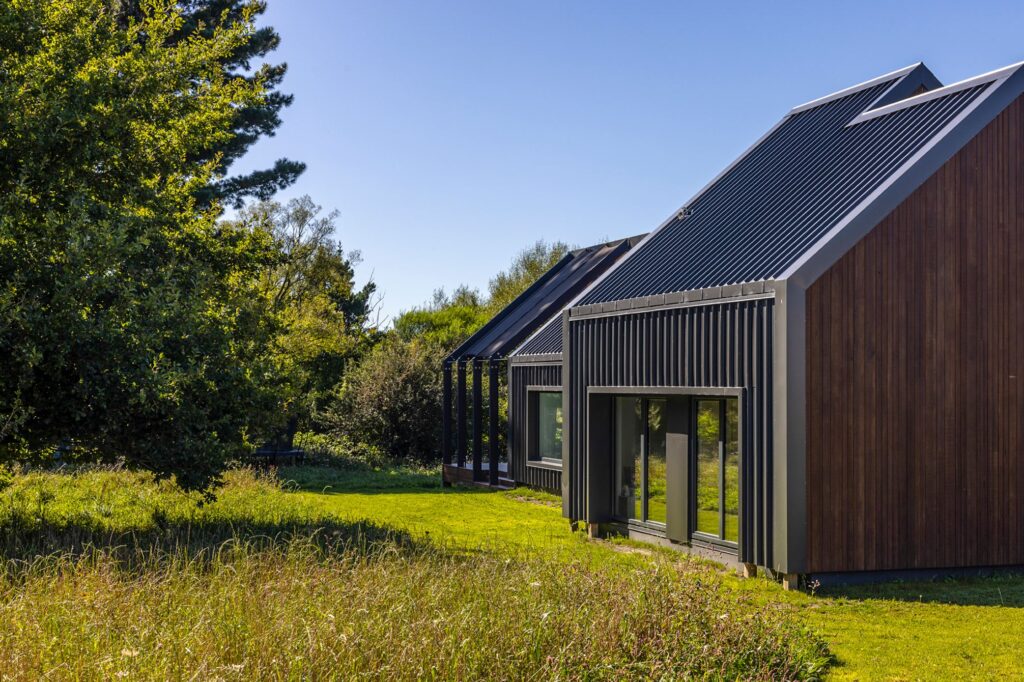
Design imperatives included both an aesthetic and functionality that harked back to her Scandinavian childhood — thermally efficient homes that require little mechanical heating and cooling, combined with a pared-back and soothing material palette. “Growing up in houses in Sweden, I was always warm, even in the middle of winter when it’s -20°C and it’s snowing. It’s just so warm inside that you can put your hand on the glazing, and it’s going to feel warm,” says Jo, mentioning that her first winters in New Zealand were rough, and she was intrigued to see people huddled in the middle of houses, congregating around heaters.
“It didn’t really make sense to me why the houses were not built better, even though the climate is a lot warmer [than in Sweden] and it should be fairly easy to achieve here. That’s kind of what inspired me… just that comfort inside the house and wanting to be close to the windows… close to the outside.”
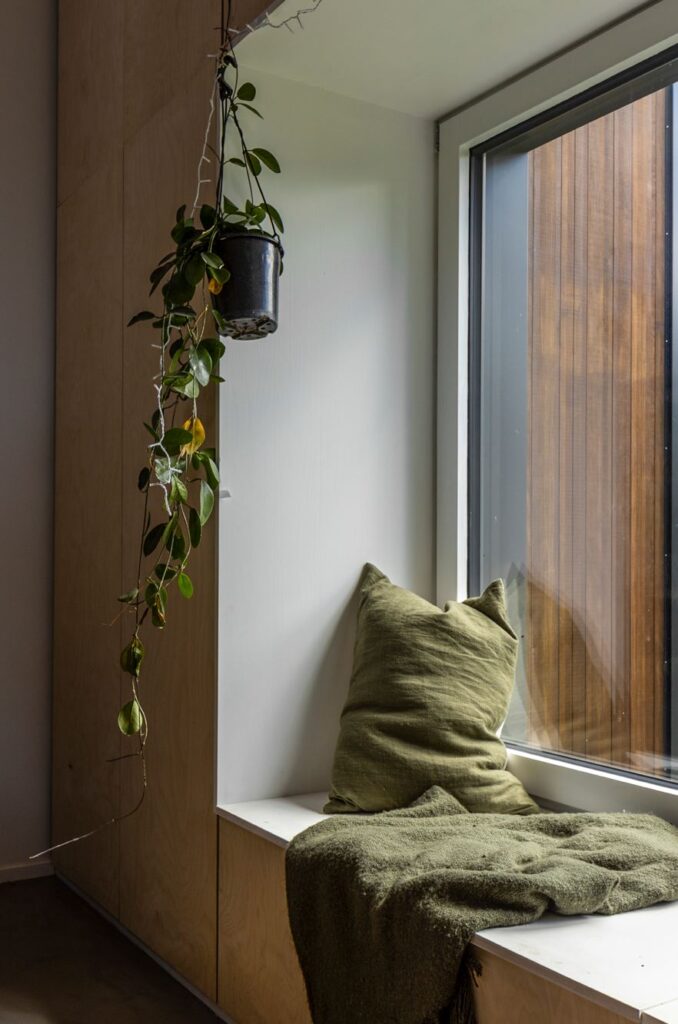
The designer, who looked into various certification styles to ensure she could methodically reach her goals, opted for passive house. “It had the best evidence behind it,” she continues, “and it was the most familiar to how they build houses in Europe.” The designer also mentions that there were many online courses available where she could translate her European knowledge into local building code for the purpose of designing this abode.
One of the key materials of this, as with any passive house, was the joinery. Although Jo knows of a few local products capable of handling the rigorous testing involved with this type of certification, she opted for triple glazed, thick timber-framed (approx 120mm) windows from a manufacturer in Germany due to cost, availability, and familiarity. “I wanted to be 100 per cent sure that [the joinery] was performing the way I wanted it to perform and I knew and trusted the German manufacturers a bit more,” she says. “I did also have an opportunity to share a container load with someone else and that way offset that extra potential carbon impact with transporting it to New Zealand.”
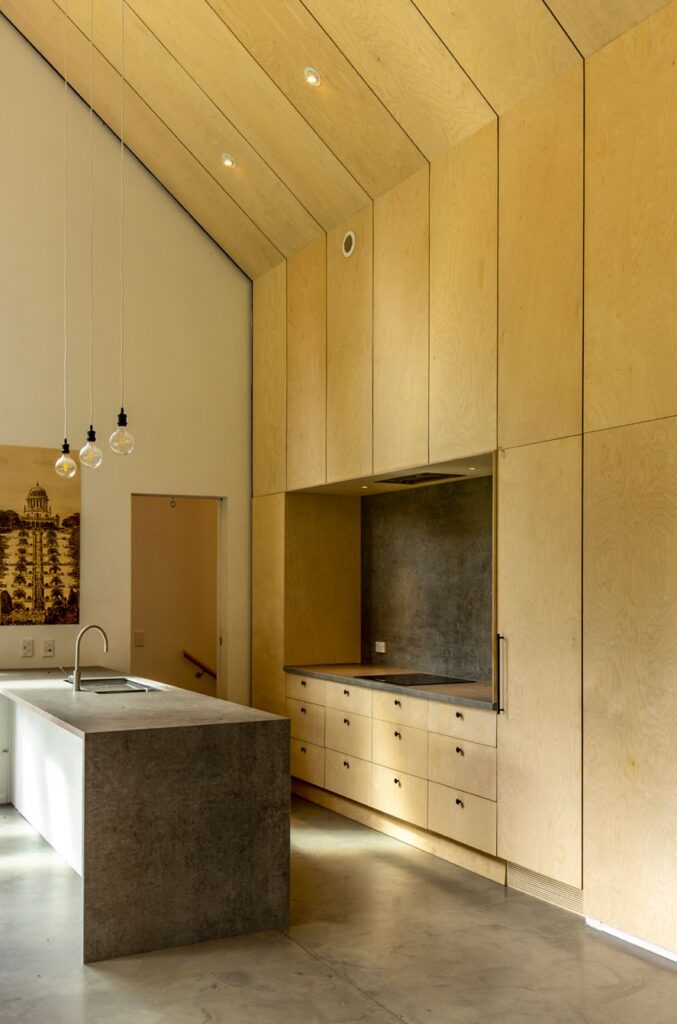
The designer sought early advice and peer review from a certification board. This pre-empting allowed her to tweak designs for comfort and aesthetics once she was confident that the numbers and science were going to stack up when it came to the building’s expected high performance. Things like skylights and the impressive cathedral-like ceiling heights are anomalies in this type of construction where rectangles are seen as de rigueur. Jo, however, proved that beauty could co-exist with stringent performance codes.
“The design is very much inspired by a traditional Swedish home where you [have] this really high-pitched roof,” she says. “The reason for that is to get the snow off in winter.” This also means that in portions of the house, you can add a sort of mezzanine or ‘half floor’ where you can utilise about half of the space at the centre of the high gable roof.
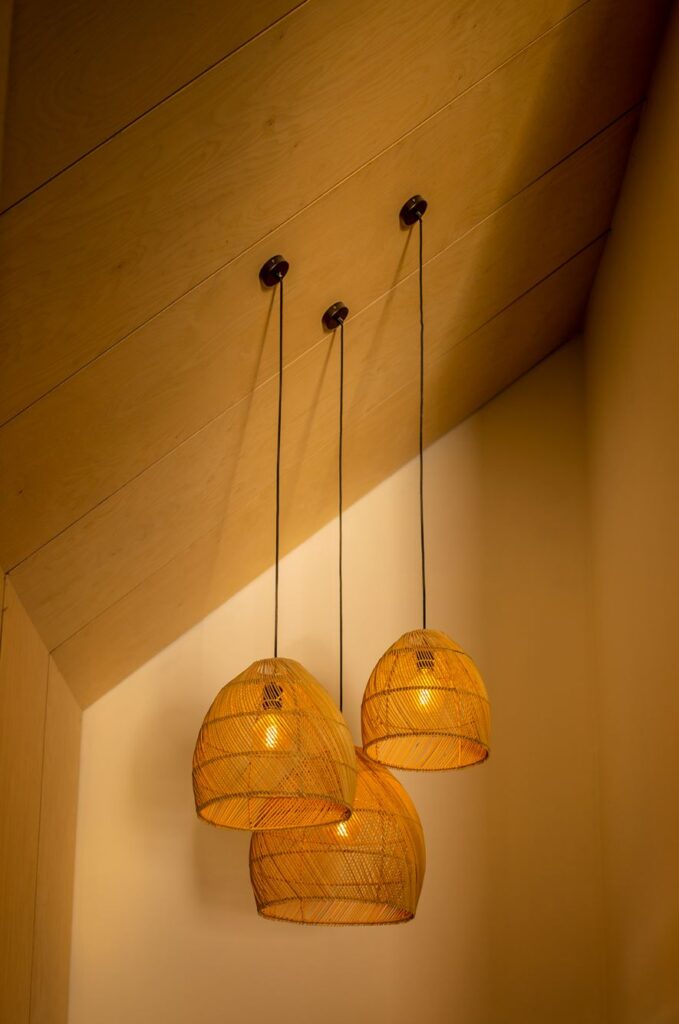
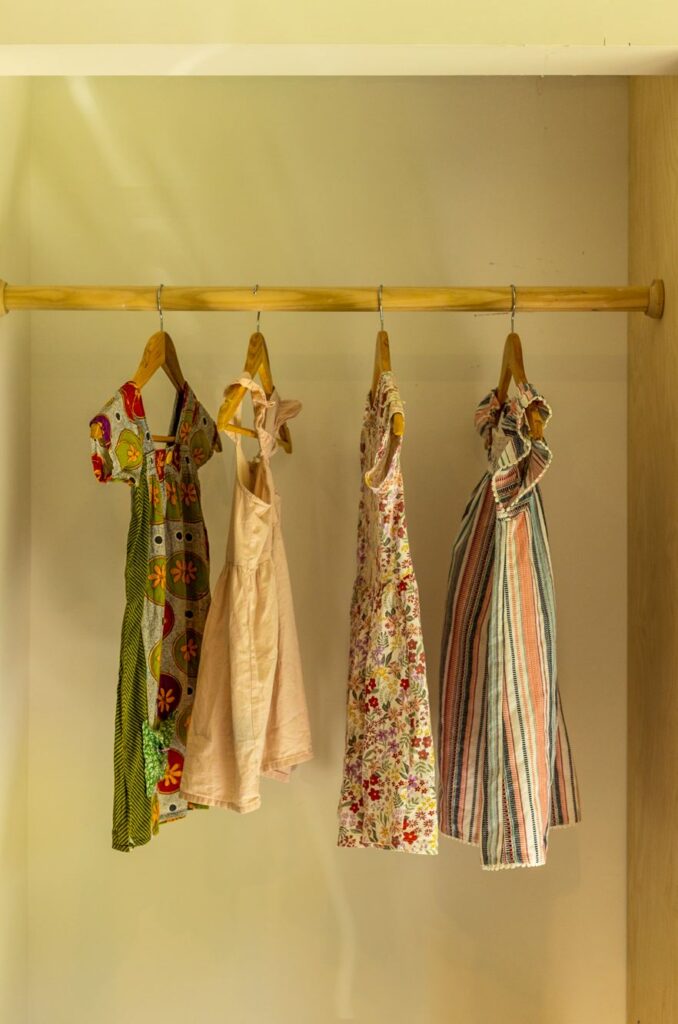
The design is a simple high apex gable, however in the social areas where this generosity of space is at its most apparent, the southern end has hidden storage giving the gable a dramatic off-centre look that is full of dynamism. “The house was all about having all the main living areas facing north, and then having the storage, laundry, toilets, bathrooms towards the back of the house. That was kind of driving the overall planning.”
The concrete floor, Jo says, helps with cooling in summer, but it is a misconception that it helps with heat gain. The walls and the roof have really thick insulation to be able to retain the heat and, as per passive house ideology, air tightness was paramount here. “There is an air tightness layer around the whole external envelope of the house,” says Jo, “so it’s essentially like a spaceship, where you control the fresh air coming in and the air coming out. So the air is only leaking through the heat recovery system.”
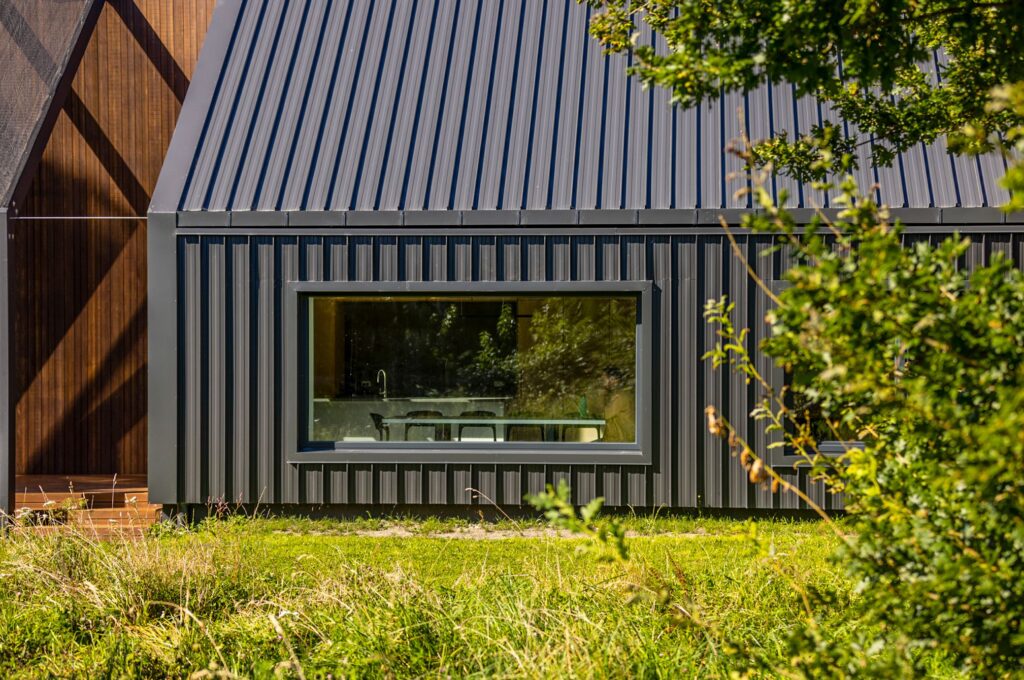
For air-tightness purposes, the building process was just as important, with Jo needing to ensure that every orifice added onto the house was double and triple checked both at design and construction stage. The infamous blower door test — a passive house staple where internal and external air pressure is regulated to test how much air is leaking in and out of the building — was eventually performed, and although the score benchmark for this certificate is around the 0.6 mark, this house performed an impressive 0.22.
“There is no accidental heat loss anywhere,” she says. Is there much monitoring involved? “We don’t actually need to monitor performance as such because the proof of it working is that we are not inputting any heating into the house,” insists Jo. “We lived here for a winter and I think there were one or two days where we switched it on for a few minutes, because there were builders coming in and out, so the doors were open a lot. The same in the summer; [it] has been really nice and cool inside. So that’s kind of how we’re measuring the performance.”

In terms of materials, the house has been clad in Roofing Industries Multidek and Vulcan cladding (Windsor grey) as well as high-performing, Abodo timber. About the latter: “Even though it’s a bit more high maintenance, it was worth it to me,” Jo says, explaining how the heavily engineered timber doesn’t use chemical but instead thermal treatments. The interior colour palette is Scandi at heart — very light and airy. She explains how calming the natural light in these uplifting spaces can be, and how the neutral plywood contributes to that sense of wellbeing.
“What makes me happy about being in this space is seeing my family healthy and comfortable all the time. You wake up in the morning and you don’t have to worry about putting a blanket around you or anything like that. You just get up and move on with your day and you’re just comfortable, and you have that extra energy to spend on important things,” she explains. “I’m really passionate about occupant health, about building environments where you can really thrive as a person, and raise healthy children without asthma.
The other aspect [I am passionate about] is the environmental side. We’ve just recently seen the impact of global warming with the flooding and it’s making me even more motivated to understand the importance of speeding up that part of the building industry and getting high performing buildings.” In her view, is there anything that would help to improve local architectural stock? “There needs to be more education and awareness around how to achieve high-performance buildings. Because… when you look into it, it all makes perfect sense… once you understand it, once it clicks, you don’t want to do anything else.”
Words: Clare Chapman
Images: Simon Devitt
Videography: Paul Brandon

Judges’ Citation
The architect’s own home brings dramatic gable forms and interior solutions reminiscent of her own childhood in Sweden. From clever storage solutions to dramatic ceiling heights, this home is testament to the fact that functionality, environmental ethos, and beauty are not mutually exclusive. As a certified passive house, this home uses technology to create a warm, comfortable, homely environment. The architect has thoroughly calculated the performance requirements of the system across all of the seasons, taking into consideration the number of inhabitants — including the dog — along with other items, such as heated towel rails. Every inch of this house has been cleverly thought out, maximising natural light and connections to the outdoors, injecting the space with generous heights and even including surprising loft space.




